Shute & Merchant
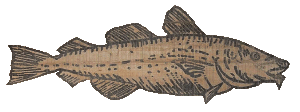
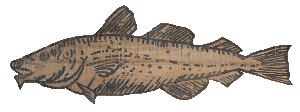
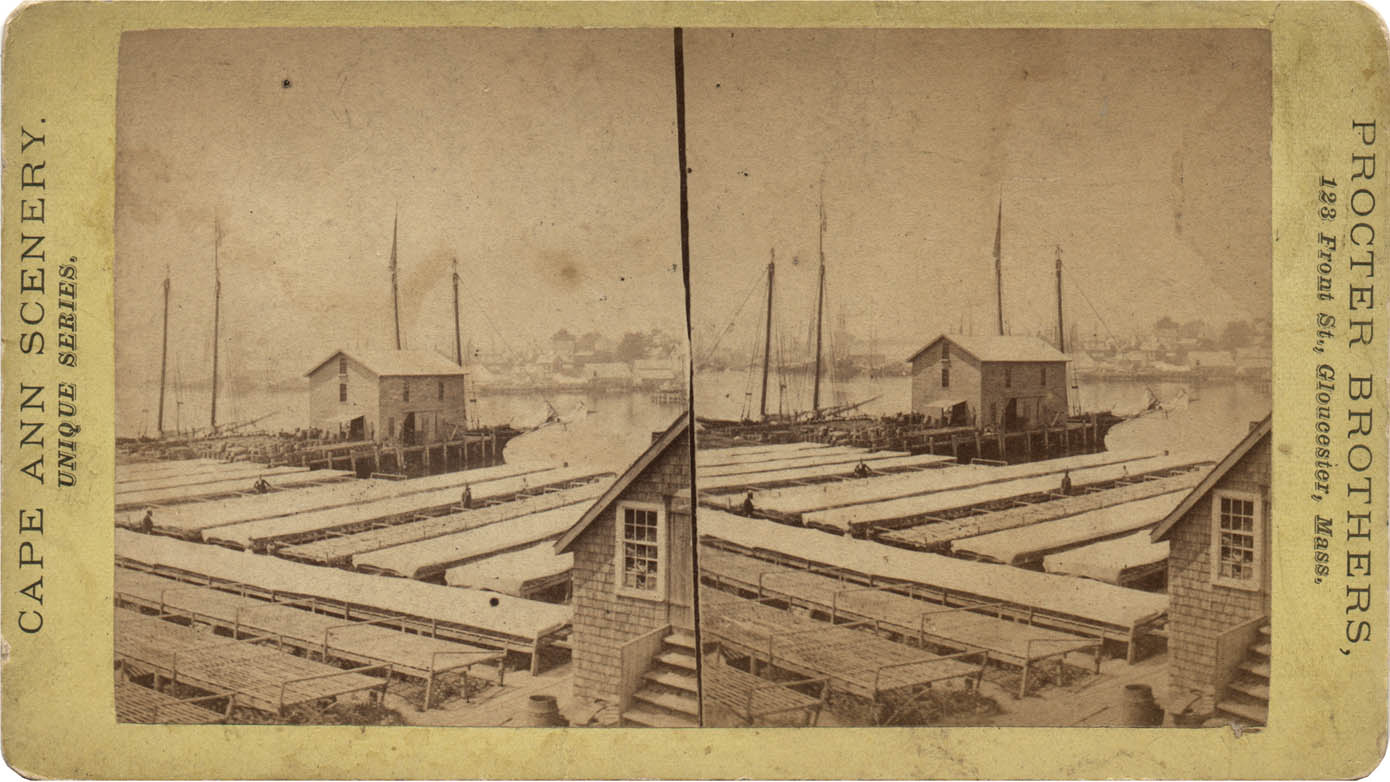
Identified as image #78 from a Cape Ann series of Procter Brothers stereoviews, this stereoview card shows a view of the Shute & Merchant fish and fitting out wharves. The loft's wharf is where the necessary equipment and supplies needed for a fishing trip to the Grand Banks or Georges would have been loaded aboard a vessel. This building was in use for that purpose during the years that the firm owned its own small fleet of fishing vessels.
A portion of the large flake yard at Shute & Merchant can be seen in the foreground of this image. Flake yards filled a very large amount of space on every fish packing wharf.
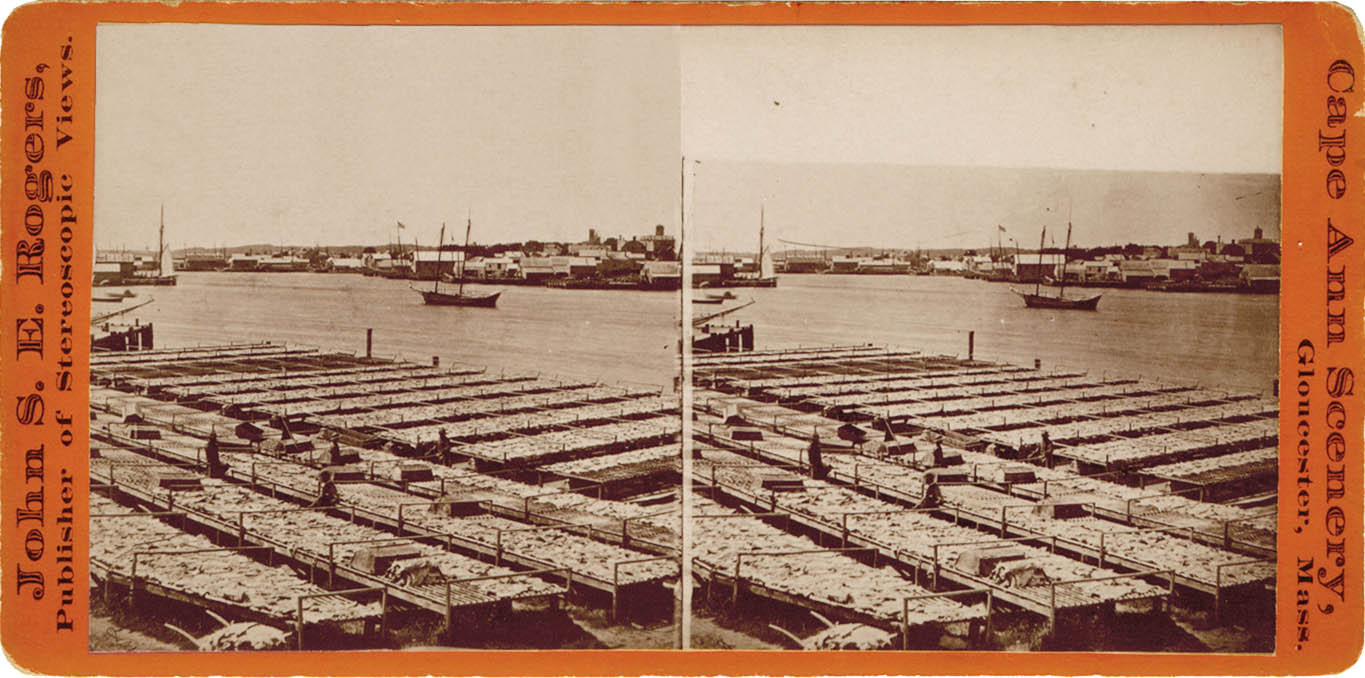
Another stereoview card published by John S. E. Rogers provides another look at what is believed to be the Shute & Merchant flake yard.
A large flake yard was a critical part of any fish packing business, as this is where the catch unloaded from a vessel was placed so it could dry. A number of steps had to be followed before the fish were ready to be put out on the flakes, and then, once on the flakes, they had to be carefully watched. When fish, such as codfish were first caught, they were put into pickle aboard ship (packed with salt). Once unloaded, the fish would be transferred to continue to pickle in butts (barrels) with more salt and water, and stored for as long as a year or more until needed to fill an order. When the fish was needed, it would be removed from the butts and put out on what were known as water horses to remove the water. After the fish had been drained, it was then placed on the flakes to dry for packing. At times during the drying process, the flakes would be covered with long pieces of tarpaulin. If there was rain, the fish would be stacked into piles and placed under small peaked boxes to keep the fish dry. Some of those boxes can be seen in this image. In the Proctor Brothers stereoview (see above), the flakes are covered with taurplin.
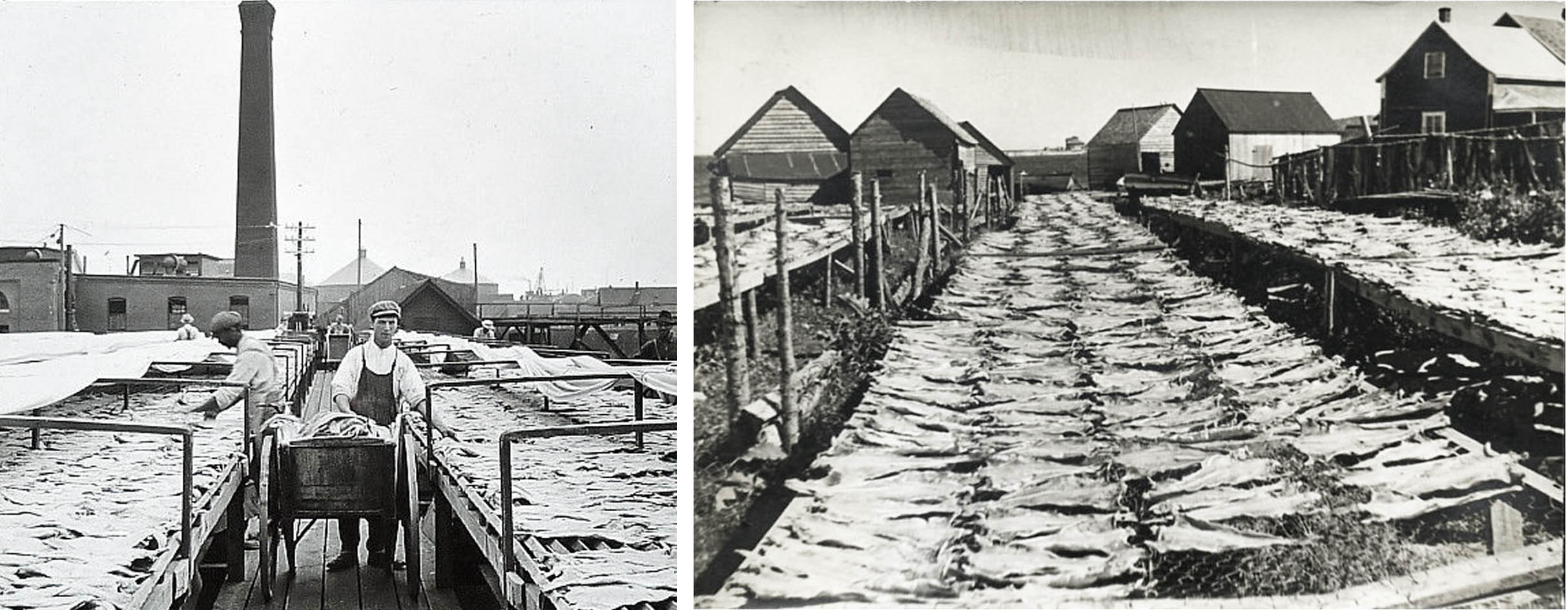
These images of other Gloucester flake yards, help to show more detail about how the flake tables were used. According to information from the Cape Ann Museum: "Most flakes rested on wooden horses. The drying time for salt fish could vary from a few hours to more than a week, depending on the type of fish and the weather. The cool, dry autumn weather made the best months for drying, and fish prepared at this time was regarded as the best quality and fetched the highest prices."
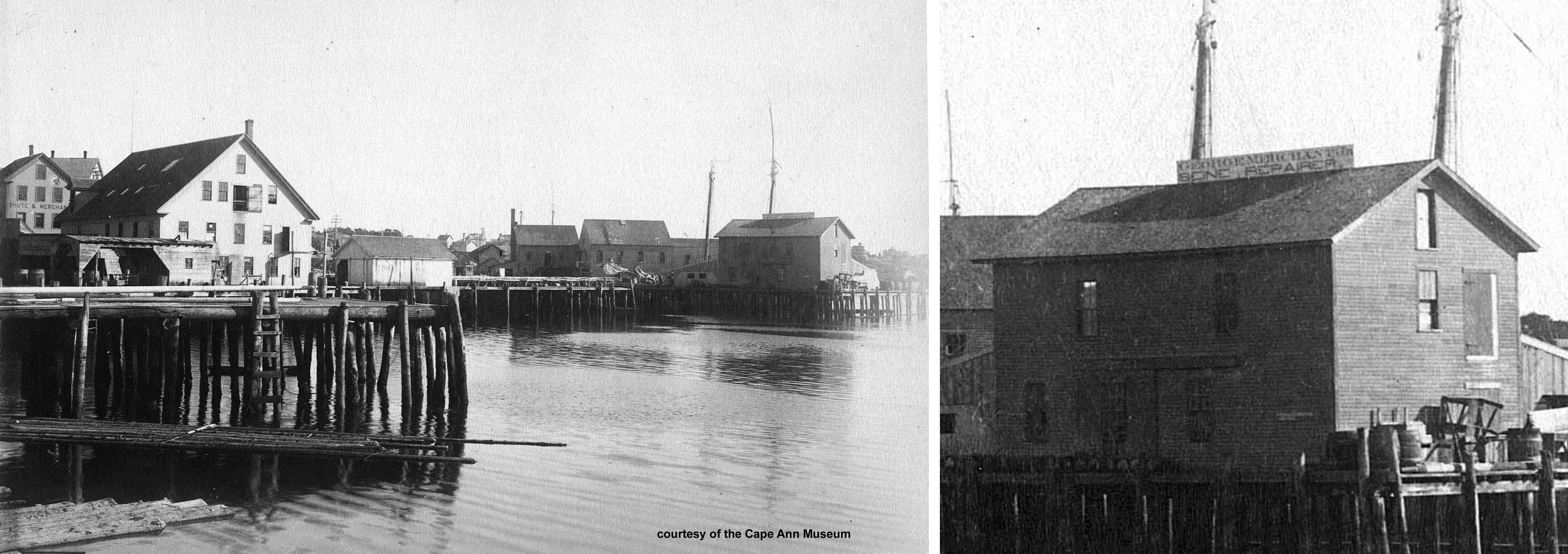
Some time after Shute & Merchant no longer need a fish and fitting out loft, it took on a new life as the home for George Merchant, Jr.'s seine and sail repair business. Geo. Merchant, Jr. was well known in Gloucester as an expert fisherman and captain, before he decided to leave the life at sea. He also patented an improvement of the seine used by many Gloucester fishermen, which may also explain his decision to switch to this new business endeavor.